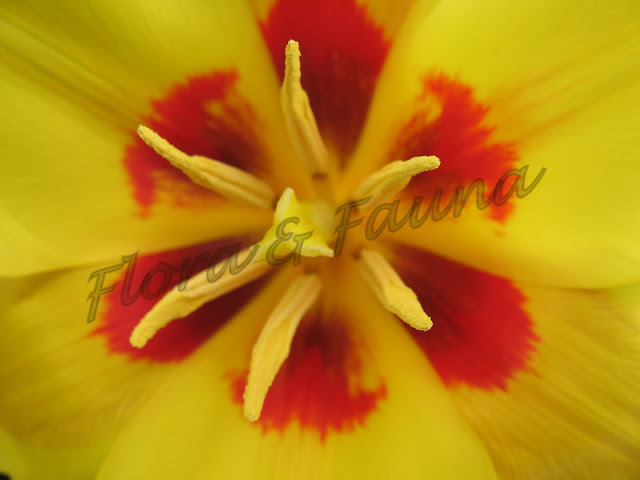I'm back from Easter holidays & a bit exhausted. I'll be entering my last trimester in a few days from now. Not feeling the change yet. It was a long break we got together; 5 days in a stretch.
During the last few weeks of winter, the summer corms are sold usually in super markets & garden shops here. We'd bought a large bag of Gladiola corms, about a 50 of them. Guess they were of different colors. During the first few weeks of spring or after the last frost has disappeared, these bulbs can be planted.
So we prepared two patches to bury them. Two things to make sure before burying them; one is that patch should be receiving about 8-10 hours of sunlight daily & the other the soil should be loose & moist. We buried them at a height of approximately 8 cm from the ground level with a distance of 5" from each other. If you want to have a continuous bloom season, then don't plant all the corms together. Plant them with a gap of 2 weeks of so to have blooms till the hard frost sets in. Watering is essential. The soil should never dry out. Rain seldom supplies enough moisture, but start watering when there are five leaves on the plants.
Cutting the blooms: -
An impressive suggestion given by of the Brenda Hyde is quoted below. I would be following the same.
"Cutting your gladiolas is a little different than most flowers. You want to cut when at least 3 of the "florets" on the stem have opened. They will continue to open in the vase. Cut when it's cool, in the morning or evening. When cutting you want to leave as much foliage as you can on the plant. Like other corms and bulbs they receive nutrients through the foliage. If you have the room it's really nice to have a cutting garden where you can grow rows of glads that have been staggered in their planting as I mentioned, to cut and bring in the house throughout the summer season. They are an elegant and beautiful flower worth growing for border color and cutting. "
Care & storage of the Corms:-
Individual flowers can be cut off as they fade. Cut back flower stalks once all flowers have gone. I would prefer to leave the foliage intact, so that the corm for the next year is good enough. Care should be taken to remove the weeds. The new corm & the new roots are formed on top of the old one during the growing season.
To store the corms / bulbs for the next season: -
Leave about an inch of the stem & then cut. Dry the corms & store at about 20 Deg C for a month. Divide the bulbs carefully & clean the debris. Do not wash the bulbs with water at any time. This might decay the lot. Let them be at 20 Deg C for a week. Then they can be stored at 10 Deg C in a box with paper or hay.
As & when we've the blooms I shall post the photos.










